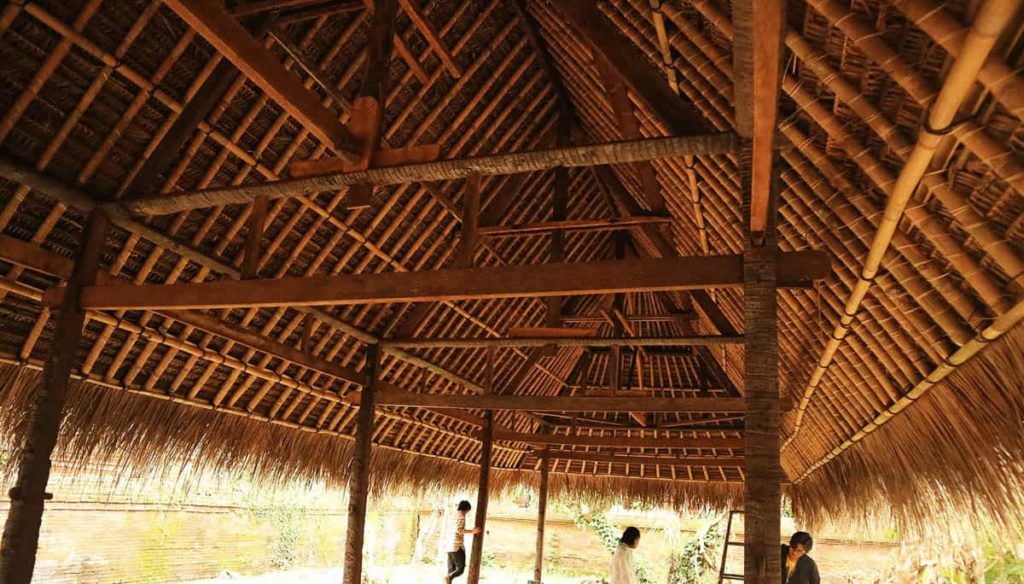- Dungki is basket for fisherman, kele is a bamboo cup and penyaludan is the liquor ladle.
- Gede Kresna carrying his responsibilities
The neem tree is a large tree that offers not only shade from the hot sun, but also a bounty of products such as medicine, fertiliser and rope. Rumah Intaran (“house of the neem tree”) was established in north of Bali by the architect Gede Kresna as a way to revive abandoned life practices. By this means, he seeks to resist what he calls kesementaraan, the transitory nature of modern life.
Pak Gede has written a book titled Revolusi dari Dapur (Revolution from the Kitchen) that attempts to revitalise the traditional concept of kitchen and cooking, which he argues is more environment- and human-friendly.
This concept is applied to Rumah Intaran as well. Like in traditional Bali houses, it contains open-air kitchens that use clay stoves and firewood for cooking. They usually have a “pantry” (in form of rack or room) somewhere above the stove, as the smoke is effective to preserve food. The wood ashes (with a mix of lerak liquid, some kind of soapberry) is used for cleaning dishes to substitute detergent soap. They also commit to use local ingredients.
✿ Can I ask about how the objects that you have revived are made? Do you find artisans who still have those skills?
Yes, they still have the skills but unfortunately, they now leave the activities because there are many industrial products that replace the traditional one. We collaborate with local artisan to improve their products by giving some contemporary touch.
✿ So who made the liquor ladle, for instance?
I found it from the old liquor seller and ask him to make one for me. And then I show this ladle to younger artisans, Nengah and Ketut, who I met a long time ago when I was collecting traditional bamboo weaving for my collections. They started to remember the product. Afterwards, we make a small research about the material that was used, such as the bamboo. Not all kind of bamboo could be used. We use specific tree branch to make the stem. And slowly, we can remake the liquor ladle with the same materials and technique.
✿ Can you tell me about the identity of north Bali? How it its culture different?
In the north of Bali, there are still many agricultural and farming activities compared to southern Bali. So, we are still more traditional. That’s why many people here still have skills related to the agricultural and farming, including the architectural building system. It influences our architecture. Beside that, the lower economic level than southern makes the northern create what they need from what they have around.
✿ Are you originally from this region?
Yes, of course. My childhood until I graduated from the high school was in North Bali.
✿ Did you write Revolusi dari Dapur (Revolution from the Kitchen)? Can you say what that was about?
Yes. This book is about the fundamental philosophy of Balinese kitchen. Because nowadays, Balinese change their kitchen into the modern one. For Balinese people, traditional kitchen is always be the first and the most important part of our Balinese house compound.
✿ What does Rumah Intaran offer visitors?
People and students come to learn about traditional knowledge and traditional architecture. We have no accommodation, but for food we have small business, named Pengalaman Rasa. Here you can discover the rich food culture of North Bali, have authentic dining experiences, cooking classes, natural products, and more.
Visit the Facebook page of Rumah Intaran for details of upcoming workshops.






